Table of Contents[Hide][Show]
- Nutrivore Score for Alaskan King Crab – 1211
- Alaskan King Crab Nutrition Facts
- Alaskan King Crab Nutrition Varies With Cooking
- Crab Nutrition Varies With Type
Health Benefits of Alaskan King Crab Nutrients+−
- Alaskan King Crab Provides 431% DV Vitamin B12 (Cobalamin)
- Alaskan King Crab Provides 214% DV EPA+DHA
- Alaskan King Crab Provides 162% DV Iodine
- Alaskan King Crab Provides 118% DV Copper
- Alaskan King Crab Provides 319.7 mg of Taurine
- Alaskan King Crab Provides 76% DV Selenium
- Alaskan King Crab Provides 62% DV Zinc
- Alaskan King Crab Provides 21.0 g of Protein
- Alaskan King Crab Provides 20% DV Phosphorus
- How Much Alaskan King Crab Should We Eat Per Day?

Although it can be a laborious process, eating crab is well-worth the effort. Not only does it taste amazing, it’s really good for you too! So, get out those crackers and pick this tasty shellfish clean!
The term shellfish refers to animals without backbones that live in the water (both saltwater and freshwater) and have some type of shell, including both mollusks and crustaceans.
Shellfish is a general term used to describe aquatic invertebrates with exoskeletons consumed as food, which basically means animals without backbones that live in the water and have some type of shell (even though they are not actually fish!). This includes mollusks such as clams, mussels, oysters, scallops and squid and crustaceans such as crab, shrimp, and lobster. While most are marine species living in saltwater, they can also be found in freshwater. Archaeological evidence suggests that shellfish have been part of the human diet for hundreds of thousands of years and today it is still popular all over the world!
There are thousands of species of crabs which can be found in all the world’s oceans, in fresh water, and on land.
Crabs are ancient creatures that have been around since the early Jurassic (roughly 200 million years ago!). Currently, there are thousands of species of crabs which can be found in all the world’s oceans, in fresh water, and on land. Known for their side-ways gait, crabs are decapod crustaceans, meaning they have 10 legs; however, the first set are its claws, which are called chelae. They are omnivores, mostly feeding on algae and are covered with a thick exoskeleton, primarily comprised of chitin (also found in the exoskeletons of insects, lobster and shrimp). It may surprise you to know that king crabs, porcelain crabs, hermit crabs and horseshoe crabs are not in fact “true” crabs even though they look similar – they belong to a different order but evolved to have a similar look through a process known as carcinization. This is not to be confused with imitation crab, which is an entirely different thing – a cheaper alternative to crab meat prepared from fish (but often full of unwanted fillers).
Crabs make up 20% of all marine crustaceans consumed world-wide.
Crabs can vary in size from half an inch (a few mm) for the pea crab to 13 ft (4 m) wide in the case of the Japanese spider crab, though the type we’re likely to find on our dinner plate are much smaller than that! Crabs make up 20% of all marine crustaceans consumed world-wide. Popular varieties include the gazami crab (the most widely fished species of crab world-wide), blue crabs, Dungeness crabs and snow crabs. Soft-shelled crabs are not a specific variety but can in fact be any type of crab. En route to adulthood crabs need to continuously molt in order to grow. This means that they need to extract themselves from their old shell, which is when they can be caught and consumed as softshell crabs. Amazingly, some crabs can regenerate limbs – a fact that is taken advantage of in the case of stone crabs, who have large claws prized for their meat. When fishermen catch these crabs, they remove one claw and return them to the sea where they are able to defend themselves with their one remaining claw. Within 18 months they will regenerate a new claw! There’s no other way to describe that but “claw-some” or maybe “crab-ulous”?
Learn What Foods to *ADD* to Your Diet
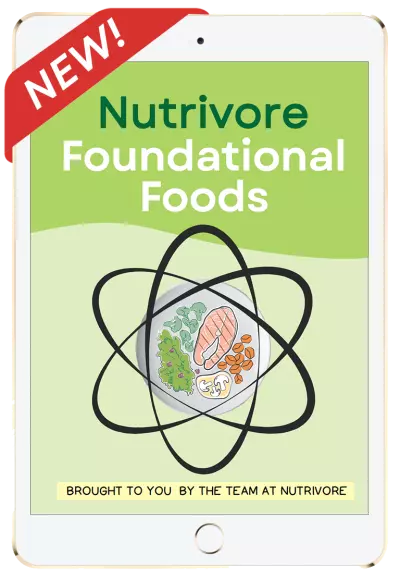
Nutrivore Foundational Foods
Learn what makes the 12 Nutrivore foundational food families nutritionally unique, their health benefits, which options are the most nutrient dense, how much of them to eat, plus various fun facts, practical pointers, and busting of common myths.
This very helpful resource will introduce you to new foods and expand your nutrition knowledge, making food choices easier!
Buy now for instant digital access.
Nutrivore Score for Alaskan King Crab – 1211

Alaskan king crab has a Nutrivore Score of 1211, making it a super nutrient-dense food! Plus, it is a low-carb food; Alaskan king crab has 0 grams of net carbs per 115 gram serving.
Per serving, Alaskan king crab is a best source (>50% daily value) of copper, EPA+DHA, iodine, selenium, taurine, vitamin B12 (cobalamin), and zinc; an excellent source (20-50% daily value) of phosphorus and protein; and is a good source (10-20% daily value) of magnesium, vitamin B6 (pyridoxine), vitamin B7 (biotin), vitamin B9 (folate), and vitamin E.
Ditch Diets. Embrace Nutrients. Start with this FREE Guide.
Sign up for the free Nutrivore Newsletter, your weekly, science-backed guide to improving health through nutrient-rich foods — without dieting harder —and get the Beginner’s Guide to Nutrivore delivered straight to your inbox!
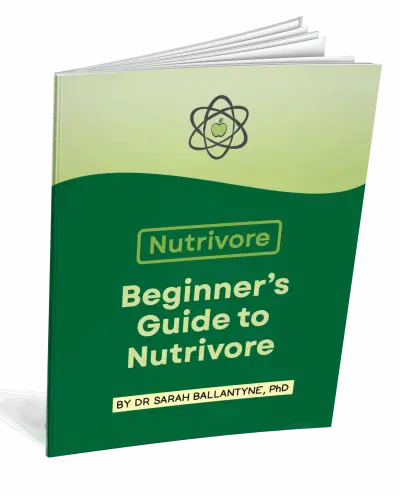
Alaskan King Crab Nutrition Facts
One serving of Alaskan king crab is standardized to 115 grams (4 ounces). When you cook Alaskan king crab, it loses some volume: 100 grams of raw Alaskan king crab is roughly equivalent to 87 grams cooked Alaskan king crab.
Alaskan king crab Nutrition Facts Per Serving
| Alaskan king crab, raw | Nutrivore Score: 1211 | Nutrient Density: Super! |
|---|---|---|
| Serving Size: 4 ounces (115 grams) | Protein: 21.0 grams | Net Carbohydrates: 0.0 grams |
| Calories: 97 | Total Fat: 0.7 grams | Dietary Fiber: 0.0 grams |
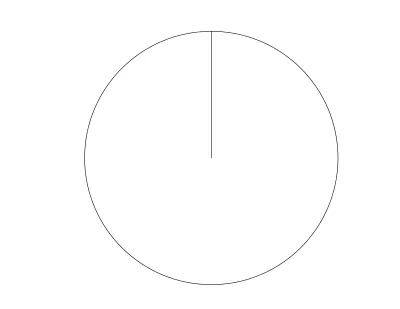

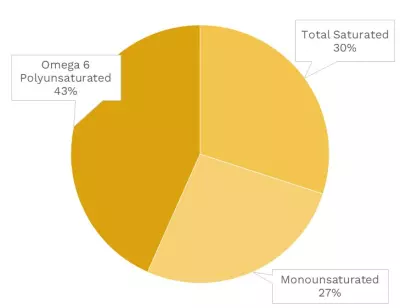
| VITAMINS | ||
|---|---|---|
| Vitamin A | 8.1 μg RAE | 1% DV |
| Vitamin B1 (Thiamin) | 49.5 μg | 4% DV |
| Vitamin B2 (Riboflavin) | 49.5 μg | 4% DV |
| Vitamin B3 (Niacin) | 1.3 mg | 8% DV |
| Vitamin B5 (Pantothenic Acid) | 0.4 mg | 8% DV |
| Vitamin B6 (Pyridoxine) | 172.5 μg | 10% DV |
| Vitamin B7 (Biotin) | 5.3 μg | 18% DV |
| Vitamin B9 (Folate) | 50.6 μg | 13% DV |
| Vitamin B12 (Cobalamin) | 10.4 μg | 431% DV |
| Vitamin C | 8.1 mg | 9% DV |
| Vitamin D (D2 + D3) | 0.0 μg | 0% DV |
| Vitamin E | 2.8 mg | 18% DV |
| Vitamin K | 0.0 μg | 0% DV |
| Choline | ~ | ~ |
| Myo-Inositol | 5.8 mg | ~ |
| CoQ10 | 0.3 mg | ~ |
| FUNCTIONAL FATS | ||
|---|---|---|
| MUFA | 0.1 g | 0% DV |
| ALA | 78.2 mg | 5% DV |
| EPA + DHA | 535.9 mg | 214% DV |
| CLA | 0.2 mg | ~ |
| Linoleic Acid | 0.1 g | 0% DV |
| MCT’s | 0.0 g | ~ |
| MINERALS | ||
|---|---|---|
| Calcium | 52.9 mg | 4% DV |
| Copper | 1060.3 μg | 118% DV |
| Iodine | 243.1 μg | 162% DV |
| Iron | 0.7 mg | 4% DV |
| Magnesium | 56.4 mg | 13% DV |
| Manganese | 40.3 μg | 2% DV |
| Phosphorus | 251.9 mg | 20% DV |
| Potassium | 234.6 mg | 5% DV |
| Selenium | 41.9 μg | 76% DV |
| Sodium | 961.4 mg | 42% DV |
| Zinc | 6.8 mg | 62% DV |
| PHYTONUTRIENTS | ||
|---|---|---|
| Carotenoids | 0.0 μg | ~ |
| Polyphenols | 0.0 mg | ~ |
| Phytosterols | 0.0 mg | ~ |
| Glucosinolates | ~ | ~ |
| Thiosulfinates | ~ | ~ |
| Betalains | ~ | ~ |
| AMINO ACIDS & PEPTIDES | ||
|---|---|---|
| Taurine | 319.7 mg | ~ |
| Ergothioneine | ~ | ~ |

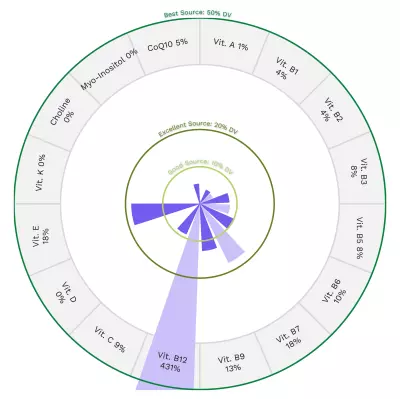


Quality Meat and Seafood
- 100% grass fed and finished beef, pasture-raised pork, pasture-raised chicken and wild-caught seafood
- Raised on regenerative family farms in the USA
- Fast delivery from our farms to your door
- Save 20% off for life, plus $15 off your first box, no coupon required
Alaskan King Crab Nutrition Varies With Cooking
The Nutrivore Score of crab varies depending on the method of preparation.
| NUTRIVORE SCORE | |
|---|---|
| Alaskan king crab, cooked, moist heat | 1279 |
| Alaskan king crab, raw | 1211 |
Crab Nutrition Varies With Type
There are many types of crab, each with its own unique taste and nutrient profile, which means their Nutrivore Scores also vary. To maximize all the benefits crab has to offer, try incorporating different types into your diet. Although imitation crab (prepared from fish) is readily available, it is much less nutrient-dense than authentic crab, as it typically contains unwanted fillers, so if you have the option choose “real” crab!
| NUTRIVORE SCORE | |
|---|---|
| Alaskan king crab, raw | 1211 |
| Blue crab, raw | 1073 |
| Dungeness crab, raw | 1077 |
| Imitation Alaskan king crab, made from surimi | 173 |
| Queen crab, raw | 1022 |
If you think crab is claw-some, maybe your friends will too!
Health Benefits of Alaskan King Crab Nutrients
Let’s take a closer look at all of the best and excellent source of nutrients found in a 4-ounce serving of Alaskan king crab and see how they benefit our health.
Alaskan King Crab Provides 431% DV Vitamin B12 (Cobalamin)
Alaskan king crab is a phenomenal source of vitamin B12 (cobalamin), providing an astounding 431% of the daily value per 4-ounce serving!

Vitamin B12 (cobalamin) is a water-soluble vitamin that serves as a cofactor for enzymes involved in energy metabolism, red blood cell production, DNA synthesis, neurotransmitter production, nervous system health, and folate metabolism. As a result of these roles, vitamin B12 is vital for maintaining brain and nervous system health, and may have a protective effect against dementia, Alzheimer’s disease, and depression. There’s also some evidence vitamin B12 may be cancer-protective, possibly through supporting folate metabolism (which then assists in repairing DNA damage). Learn more about vitamin B12 here.
Alaskan King Crab Provides 214% DV EPA+DHA
Alaskan king crab is a fantastic source of EPA+DHA, providing a whopping 214% of the daily value per 4-ounce serving!
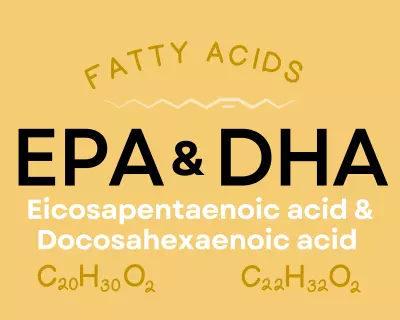
Eicosapentaenoic acid (EPA) and docosahexaenoic acid (DHA) are long-chain omega-3 fats that play important roles in neurological health, immune function, eye health and vision, inflammation, pain signaling, gut health, fetal development, and some aspects of cardiovascular health (like triglyceride levels and blood clotting). They exert many of their effects by helping form chemical messengers called prostaglandins, thromboxanes, and leukotrienes. EPA and DHA also serve as a structural component of the cell membrane, influencing important properties such as membrane fluidity and permeability. Small amounts of them can be synthesized from a shorter-chain omega-3 fat, alpha-linolenic acid (ALA). Learn more about EPA and DHA here.
Alaskan King Crab Provides 162% DV Iodine
Alaskan king crab is a fantastic source of iodine, providing 162% of the daily value per 4-ounce serving!
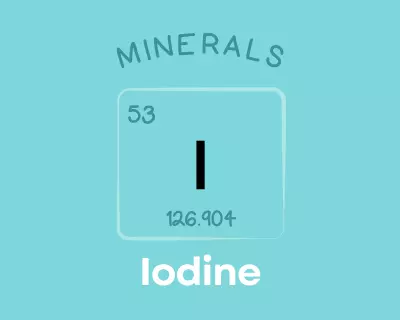
Iodine is a trace mineral that serves as a structural component of thyroid hormones, giving it a major role in thyroid health and function. As a result, it’s involved in regulating metabolism, reproductive function, fatty acid release, carbohydrate absorption, growth, and development. Consuming adequate amounts is particularly important during pregnancy (for preventing complications like preeclampsia, preterm delivery, miscarriage, and stillbirth) and during childhood (where it supports central nervous system development). Untreated iodine deficiency can lead to goiter and hypothyroidism. Learn more about iodine here.
Alaskan King Crab Provides 118% DV Copper
This crab is also a wonderful source of copper, providing 118% of the daily value per 4-ounce serving!

Copper is a trace mineral that’s essential for all living organisms. Copper serves as a component of numerous enzymes and proteins in the body, giving it diverse roles in the growth, development, and maintenance of various organs (including the heart and brain), bone, and connective tissue. Copper is also involved in glucose and cholesterol metabolism, helps regulate gene expression, can scavenge free radicals, and is needed for the production of red blood cells. Learn more about copper here.
Alaskan King Crab Provides 319.7 mg of Taurine
Alaskan king crab is rich in taurine, containing 319.7 mg of taurine per 4-ounce serving!
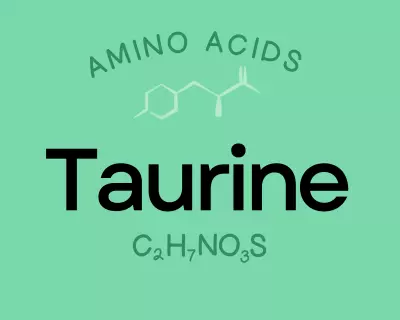
Taurine is a non-proteinogenic amino sulfonic acid that supports neurological development, serves as a major component of bile (which helps to digest fats), and plays a role in water and mineral regulation within the blood (including through membrane stabilization and calcium signaling). Taurine also regulates the immune system and serves as an important antioxidant, and it plays a role in cardiovascular function and the development of skeletal muscle.
Alaskan King Crab Provides 76% DV Selenium
Alaskan king crab is also a great source of selenium, providing 76% of the daily value per 4-ounce serving!
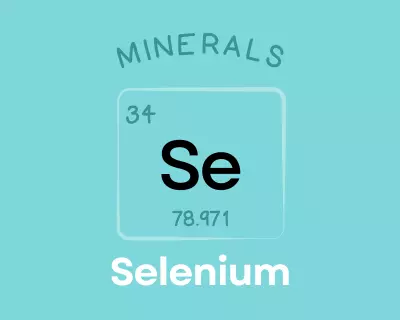
Selenium is a trace mineral needed by all mammals to sustain life. It serves as a component of the non-proteinogenic amino acids selenocysteine and selenomethionine, and also helps form over two dozen selenoproteins involved in reproduction, thyroid hormone metabolism, antioxidant defense, DNA synthesis, and immunity. Observational research suggests selenium could play a protective role against cancer, heart disease, asthma, and inflammatory bowel disease, although human trials have generally been lacking or contradictory. There’s also evidence that selenium can play a preventative role in asthma and inflammatory bowel disease, while also reducing mortality in patients with sepsis. Learn more about selenium here.
Alaskan King Crab Provides 62% DV Zinc
This shellfish is a fantastic source of zinc, providing 62% of the daily value per 4-ounce serving!
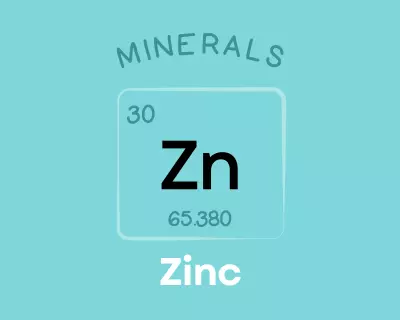
Zinc is an essential trace mineral that serves as a cofactor for over 300 enzymes and 1000 transcription factors, giving it important roles in immune function, sensory organ function, reproduction, gene regulation, DNA synthesis, wound healing, and the metabolism and activity of multiple other nutrients. Research shows it can reduce the duration of the common cold when taken shortly after the onset of illness, and can also benefit immune health in the elderly and among HIV/AIDS patients. Some studies also suggest a protective role of zinc in neurological conditions like Alzheimer’s disease and depression. Learn more about zinc here.
Alaskan King Crab Provides 21.0 g of Protein
Alaskan king crab is an excellent source of protein, providing 21.0 grams of protein per 4-ounce serving!
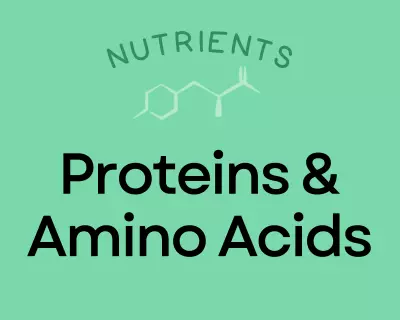
Proteins are the molecules that actually perform most of the various functions of life. In addition to being major structural components of cells and tissues, they have incredibly diverse roles from driving chemical reactions (e.g., enzymes) to signaling (e.g., some types of hormones) to transporting and storing nutrients. Dietary protein is necessary to supply the amino acid building blocks for all of the proteins in our bodies. The recommended daily allowance of protein is 0.36 grams per pound body weight (0.8 grams per kilogram of body weight). That amounts to 56 grams for a 150-pound person. However, it’s important to emphasize that this number is considered a minimum daily allotment, and there is no established upper limit. In fact, many studies have evaluated diets containing three to four times more protein than this minimum and proven benefits to weight management, body composition, hormone regulation, and cardiovascular health. These studies suggest that an optimal protein intake for most people is probably in the range of 1.2 to 1.8 grams per kilogram bodyweight (82 to 122 grams for that same 150-pound person), and that people who are very active may see the best results at even higher intake. Learn more about protein and amino acids here.
Alaskan King Crab Provides 20% DV Phosphorus
Alaskan king crab is also an excellent source of phosphorus, providing 20% of the daily value per 4-ounce serving!
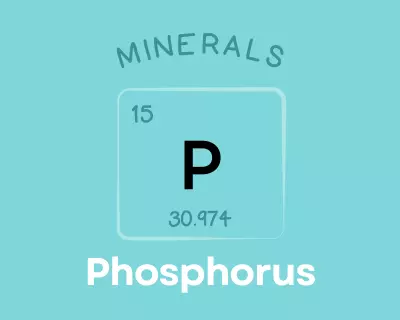
Phosphorus is an essential mineral that makes up about 1% of the total weight of the human body. Along with serving an important structural role for building nucleic acids and cell membranes, phosphorus is involved in numerous biological processes—including acid-base regulation, energy production, cell signaling, and bone mineralization. Excess phosphorus has been linked to a higher risk of cardiovascular disease, fractures, and osteoporosis, especially in the context of a low-calcium diet. Learn more about phosphorus here.
Learn What Foods Are the Best Sources of Every Nutrient

The Top 25 Foods for Every Nutrient
The Top 25 Foods for Every Nutrient e-book is a well-organized, easy-to-use, grocery store-friendly guide to help you choose foods that fit your needs of 43 important nutrients while creating a balanced nutrient-dense diet.
Get two “Top 25” food lists for each nutrient, plus you’ll find RDA charts for everyone, informative visuals, fun facts, serving sizes and the 58 foods that are Nutrient Super Stars!
Buy now for instant digital access.
How Much Alaskan King Crab Should We Eat Per Day?
Shellfish are nutrient dynamos which can even rival liver in terms of nutrient density!
Fish and shellfish are not only nutrient-dense sources of highly-digestible gut-friendly complete protein and the best food sources of the very important long-chain omega-3 fatty acids, DHA and EPA, but they’re outstanding sources of important nutrients in which we are commonly deficient. Eating seafood reduces risk of cardiovascular disease, type 2 diabetes, obesity and some forms of cancer.
Shellfish are extremely rich sources of vitamin B12, zinc, copper and selenium while also providing impressive amounts of vitamin A, vitamin C, vitamin D, iron, copper, calcium, phosphorus, potassium, magnesium, manganese, iodine and selenium. Shellfish also contain smaller but still notable amounts of vitamins B1, B2, B3, B5, B6, and B9, while also providing dozens of trace minerals.
In fact, every 100 grams per day of seafood decreases all-cause mortality by 7%. And, every 20 grams per day of fish decreases cardiovascular disease mortality by 4%. Aim to eat three or more servings of seafood weekly (and up to every meal!). Learn more about seafood here.
It’s always best to mix up the foods you eat day to day (aiming for a wide variety of different fish and shellfish throughout the week), and Alaskan king crab definitely has a place at the table.
Easily track your servings of Nutrivore Foundational Foods!

The Nutrivore Weekly Serving Matrix
The Nutrivore Weekly Serving Matrix digital resource is an easy-to-use and flexible weekly checklist designed to help you maximize nutrient-density and meet serving suggestions of Nutrivore foundational foods, all without having to weigh or measure your foods!
Includes a 22-page instructional guide and downloadable interactive guides.
Buy now for instant digital access.
Citations
Expand to see all scientific references for this article.
Chin SF, Liu W, Storkson J, Ha Y, Pariza M. Dietary sources of conjugated dienoic isomers of linoleic acid, a newly recognized class of anticarcinogens. Journal of Food Composition and Analysis. 1992 Sept(5):185-197. DOI:10.1016/0889-1575(92)90037-K
Clements RS Jr, Darnell B. Myo-inositol content of common foods: development of a high-myo-inositol diet. Am J Clin Nutr. 1980 Sep;33(9):1954-67. doi: 10.1093/ajcn/33.9.1954. PMID: 7416064.
Frida Food Database. National Food Institute, Technical University of Denmark: Crab claws, meat, raw
Froger N, Moutsimilli L, Cadetti L, Jammoul F, Wang QP, Fan Y, Gaucher D, Rosolen SG, Neveux N, Cynober L, Sahel JA, Picaud S. Taurine: the comeback of a neutraceutical in the prevention of retinal degenerations. Prog Retin Eye Res. 2014 Jul;41:44-63. doi: 10.1016/j.preteyeres.2014.03.001. Epub 2014 Apr 8. PMID: 24721186.
Pravst I, Zmitek K, Zmitek J. Coenzyme Q10 contents in foods and fortification strategies. Crit Rev Food Sci Nutr. 2010 Apr;50(4):269-80. doi: 10.1080/10408390902773037. PMID: 20301015.
Sprague M, Chau TC, Givens DI. Iodine Content of Wild and Farmed Seafood and Its Estimated Contribution to UK Dietary Iodine Intake. Nutrients. 2021 Dec 31;14(1):195. doi: 10.3390/nu14010195. PMID: 35011067; PMCID: PMC8747335.
USDA Food Central Database: Crustaceans, crab, alaska, king, cooked, moist heat
USDA Food Central Database: Crustaceans, crab, alaska, king, raw
Watanabe T, Kioka M, Fukushima A, Morimoto M, Sawamura H. Biotin content table of select foods and biotin intake in Japanese. Int J Anal Bio-Sci. 2014. Vol 2(4):109-125.


